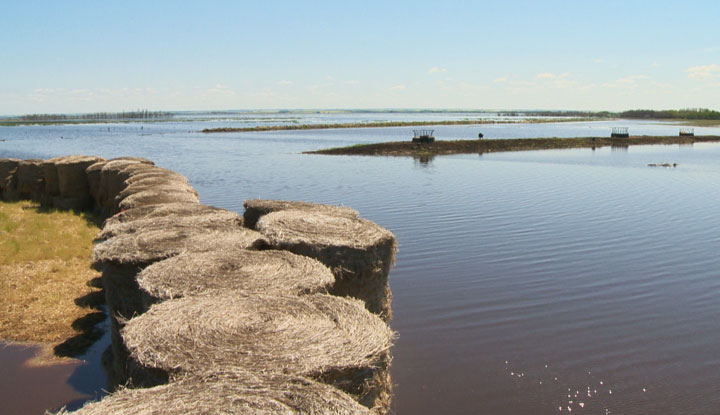Saskatchewan’s Water Security Agency (WSA) has provided an update to the province’s spring runoff for 2022.

In the southern half of the province, spring runoff is either largely complete or well underway, said the WSA in a press release.
It adds, “southwest Saskatchewan, the area most affected by last year’s extreme dry conditions, saw higher than expected runoffs from the spring melt in 2022, with some additional late-winter storms that helped improve moisture and water supply conditions even though runoff in this area was below normal.”
Water levels in Lake Diefenbaker have improved with the spring melt but remain below normal. Although, the WSA is waiting to see how much of the alpine snowpack runoff arrives later this summer.
In the southeast, the melt and runoff is largely complete, and the risk of localized flooding from the combination of two late winter storms, plus warming temperatures and additional rain has also receded.

Get breaking National news
Flows along the Souris River have peaked and are beginning to drop. The WSA expects the Grant Devine reservoir will fill later this month at around the same time apportionment releases to meet international obligations begin.
In the east-central area of the province, seasonal temperatures have resulted in a nearly complete melting of the snowpack.
The agency said that some snow remains in the Porcupine Hills, the upper portions of the Assiniboine River Basin northwest of Preeceville, areas in the Swan River Basin near the Manitoba border and the Pewei River Basin.
“Flows in some rivers in the area have peaked and were near or slightly above normal. Flows along the Swan River are still rising and although the WSA has not received any reports of flooding in this part of the province yet, added rainfall like that of which was seen near Hudson Bay and Deschambault Lake over the past weekend could see higher water levels remain in place for longer that could lead to localized flooding.”
Along the Qu’Appelle River system, the melt and runoff is largely complete and flows are receding over lower areas. The WSA said has been making diversions into Last Mountain Lake to help bring it up to desirable summer operating levels.
The agency said Crooked Lake is now at its “desirable summer operating level and stoplogs will be installed to maintain it for the season.” In the north and into the Churchill Basin, the melt is in the early stages.
However, no runoff related issues are expected at this time, WSA is cautioning residents that with the higher-than-normal snow accumulation in this part of the province, the potential for higher runoff remains.
The amount of runoff will depend on a number of factors, including the speed of melt and the impact that additional snow or rain might have. The agency will continue to monitor conditions across the province and provide updates as they change.




Comments